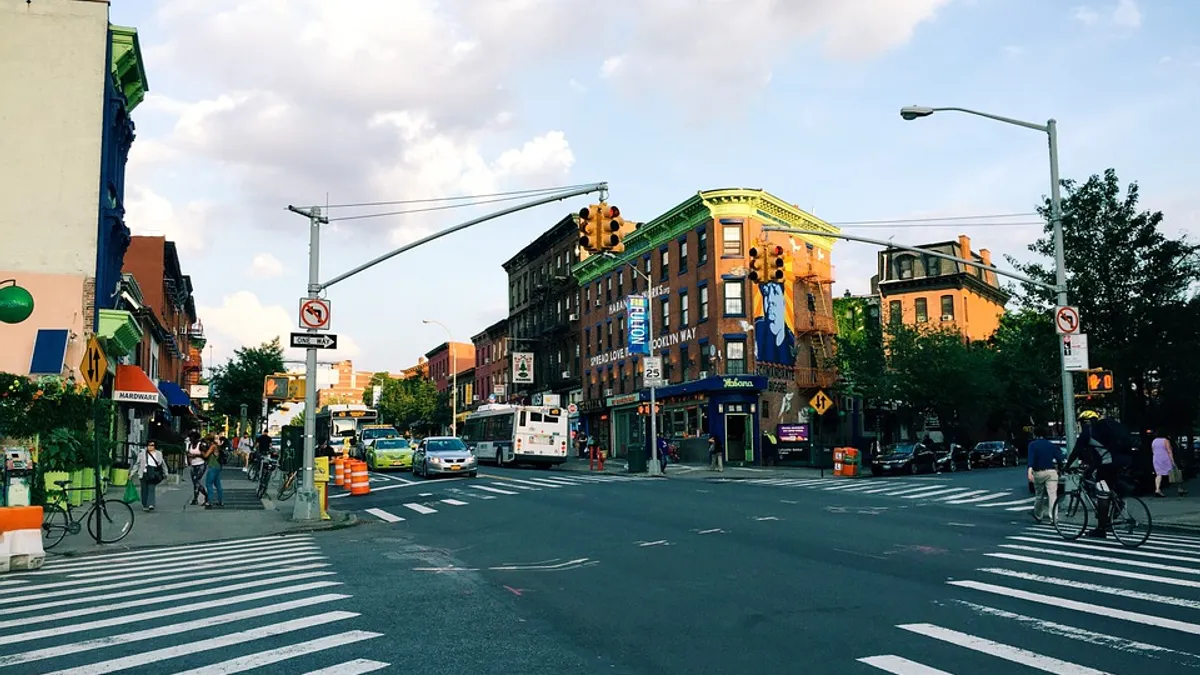Dive Brief:
- The National Association of City Transportation Officials (NACTO) released a guide, "Don't Give Up at the Intersection," with best practices for modern intersection designs. The design guidelines prioritize safety and improving walking and biking for citizens of all ages and abilities.
- Three principles lead the report: reduce turning speeds; make bikes and pedestrians visible; and give bikes the right of way. Different tools are covered for three different types of intersections: protected intersections, dedicated intersections and minor street crossings.
- The best practices include "quick build" strategies and permanent techniques. They highlight examples from North American cities that have implemented each of the design features as well as variation ideas so cities can scale to their needs.
Dive Insight:
In 2017, 43% of urban cyclist fatalities occurred at intersections, NACTO says. It contends that the design of many intersections encourages drivers to make sweeping, fast turns that endanger pedestrians and cyclists. Thus, a large portion of the guidebook is dedicated to improving intersection design for turning vehicles.
NACTO's guide focuses not only on pedestrian and cyclist safety but also their comfort at intersections. The premise is that making pedestrians and cyclists feel more comfortable and welcome at intersections could increase their use of that transportation mode, often accompanied by the ultimate goal of boosting bike ridership and reducing single-passenger vehicle trips. Many cities already buy into that approach with other infrastructure. For example, San Francisco is going to create 20 miles of new bike lanes to improve safety for existing bicyclists; but that also puts in place infrastructure that encourages new ridership.
NACTO says protected bike lane mileage has increased 600% in cities since 2011, but intersection designs are an underdeveloped part of the bike-friendly toolbox. The guide serves to fill that gap.
The new guide complements NACTO's other work to increase urban street safety, including its previous report, Urban Bikeway Design Guide. Last year it partnered with the Open Transport Partnership to launch a platform for easily mapping features of cities' streets with standardized, street-level GIS data. It also partnered with the U.S. Department of Transportation to release two reports under the same name — Optimizing Large Vehicles for Urban Environments — centered on the importance large vehicle design plays in overall street safety.












